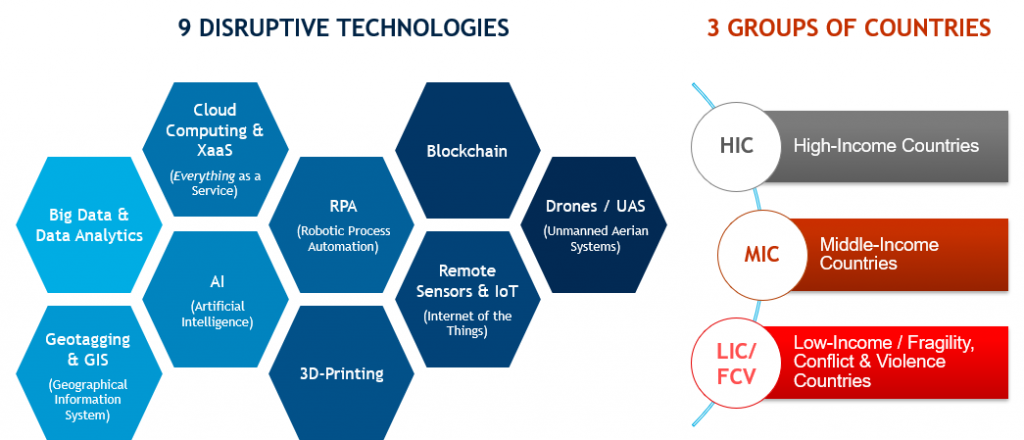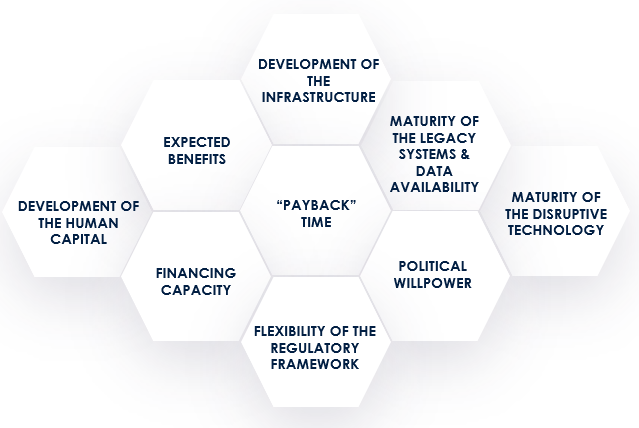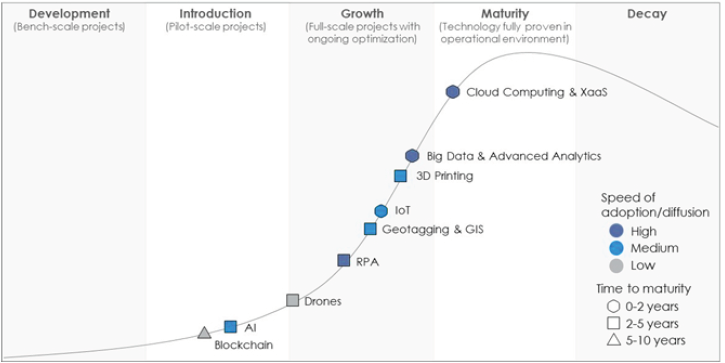Disruptive technologies can provide developing countries with a pathway to revamp their public procurement processes

Download and read Disruptive Technologies in Public Procurement today.
Efficient and appropriate public procurement facilitates trade and promotes economic growth. However, the integrity, transparency, and efficiency of public spending has increasingly become a focus of wider public attention and concern. New technologies have the potential to make a radical change in the way public organizations around the world procure and will likely benefit buyers as well as suppliers and citizens. For instance, supply chain deliveries will be enhanced by using drones to get medicine to people in remote areas and will be securely monitored via Geotagging. Contracts and payments will be made transparent via blockchain. Remote sensing will revolutionize the monitoring and evaluation of projects.
During the COVID-19 crisis, entities which were using digital solutions were able to respond better and procurement professionals have shown great resilience , resorting to both simple and complex technologies. In France and the United States, hospitals have used 3D-printed nasal test swabs or adaptors for ventilators to tackle supply shortages. The digitalization of public procurement processes via the use of Cloud technologies also simplified and enhanced the efficiency of key transactions.
A new World Bank study provides an overview of selected technologies identified as “disruptive” that could be useful to public procurement. It includes several case studies from the deployment of these technologies around the world. Nine technologies with actual or potential impacts on public procurement have been identified (as shown in the figure below):

The report also provides an assessment of the ability of the technology to respond to a wide range of needs on a long-term basis, and its applicability to specific public procurement business needs. Indeed, the ability of a European procurement entity to adopt Big Data analytics tools is obviously not the same in countries where data-sharing is not widespread or in regions with poor internet connection.
The study has identified driving forces for the implementation of disruptive technologies (DT), whose strength is more or less acute depending on the situation of the country:

The report is designed to help governments and technical teams in designing and implementing procurement reforms and embedding innovative, disruptive, and other new technologies into the public procurement process.
When looking more precisely at the ramp-up model in fragile, conflict and violent contexts as well as low-income countries, cloud computing and XaaS (everything-as-a-service) appear as the most appropriate “first” technologies. This means that it requires the fewest number of technological prerequisites while producing the most value added. In high income countries, the technological and economic contexts enable a short-to-medium term adoption of the DTs.

Maturity Curve
Disruptive Technologies are innovations that are expected to significantly change the way that public organizations handle their purchasing operations in the near future , both worldwide and locally. An organization wishing to adopt a disruptive technology must also ensure that it has the necessary materials and tools, without which the technology would not be able to fully develop its potential.
The nature of the public procurement process makes the technologies under consideration particularly promising. Indeed, it involves numerous analytical tasks and strategic decision making for which data compilation and retrieval or AI tools can provide valuable assistance. Moreover, new hardware solutions, such as drones or 3D printers, may considerably affect the procurement and sourcing strategies for certain types of goods.
The report provides a detailed description of how disruptive technologies can be incorporated into each step of the procurement process. The guidance on the how to assess and implement the fit-for-purpose Disruptive Technology, with the legal challenges and the impact on the regulatory framework hopes to trigger the use of Disruptive Technology in Public Procurement. Additionally, the report provokes procurement practitioners to brainstorm on ways to incorporate DTs in their procurement process, make the process more efficient and accountable. Which Disruptive Technologies could be the best solution to enhance your procurement process?
